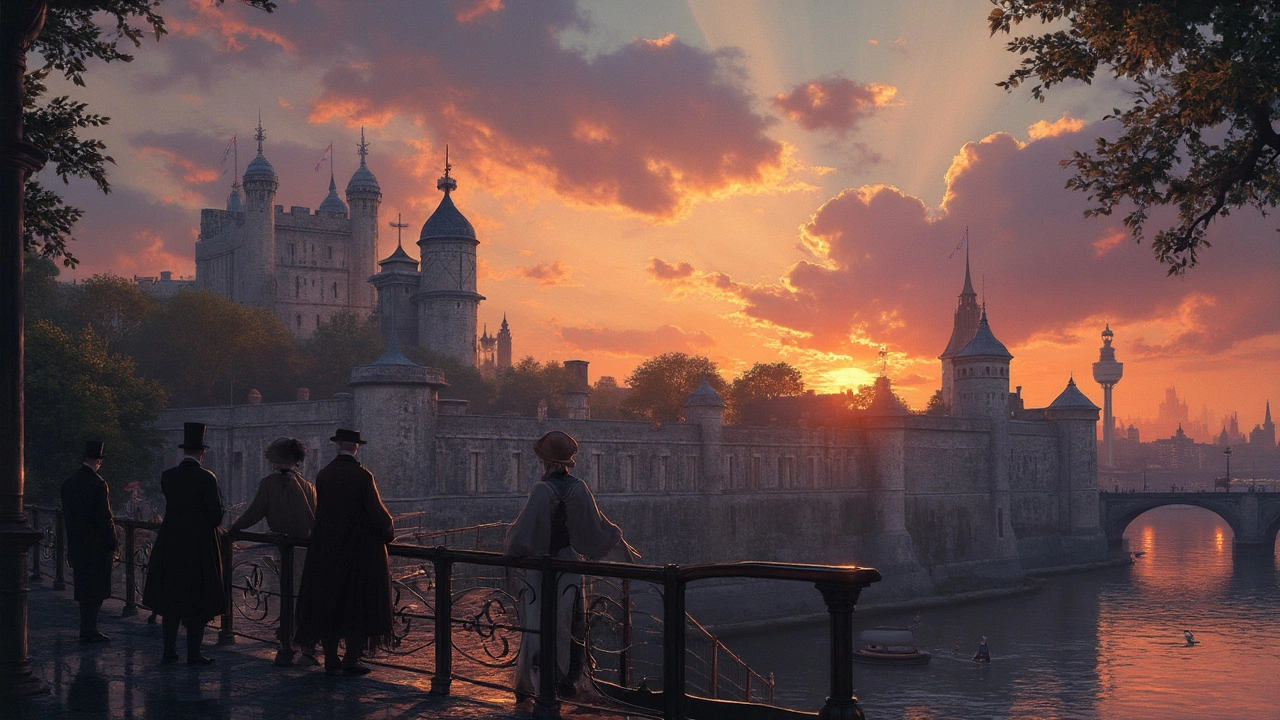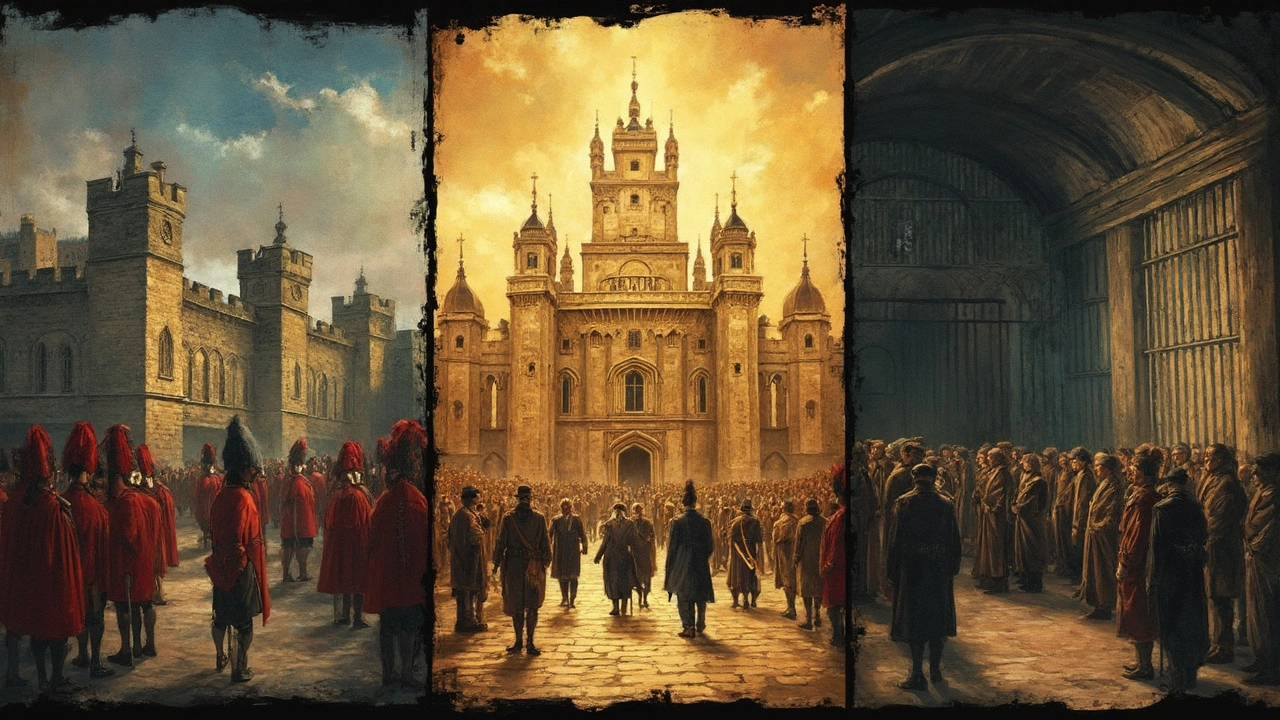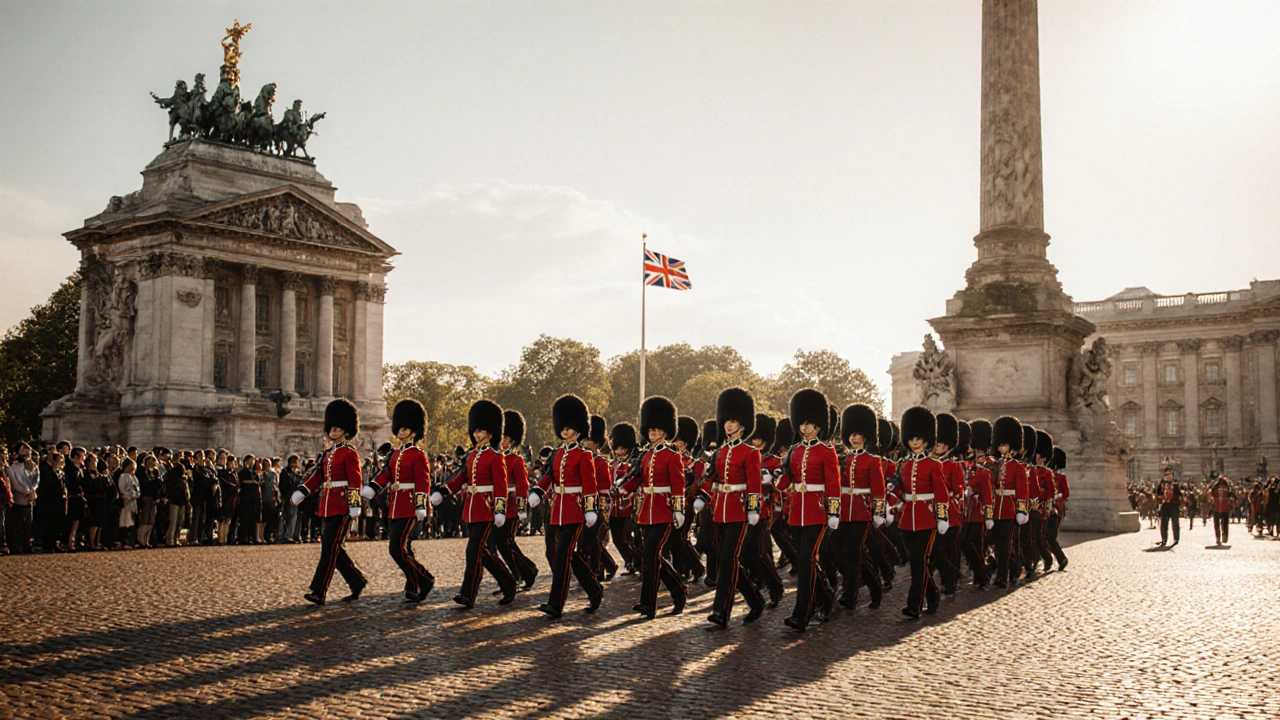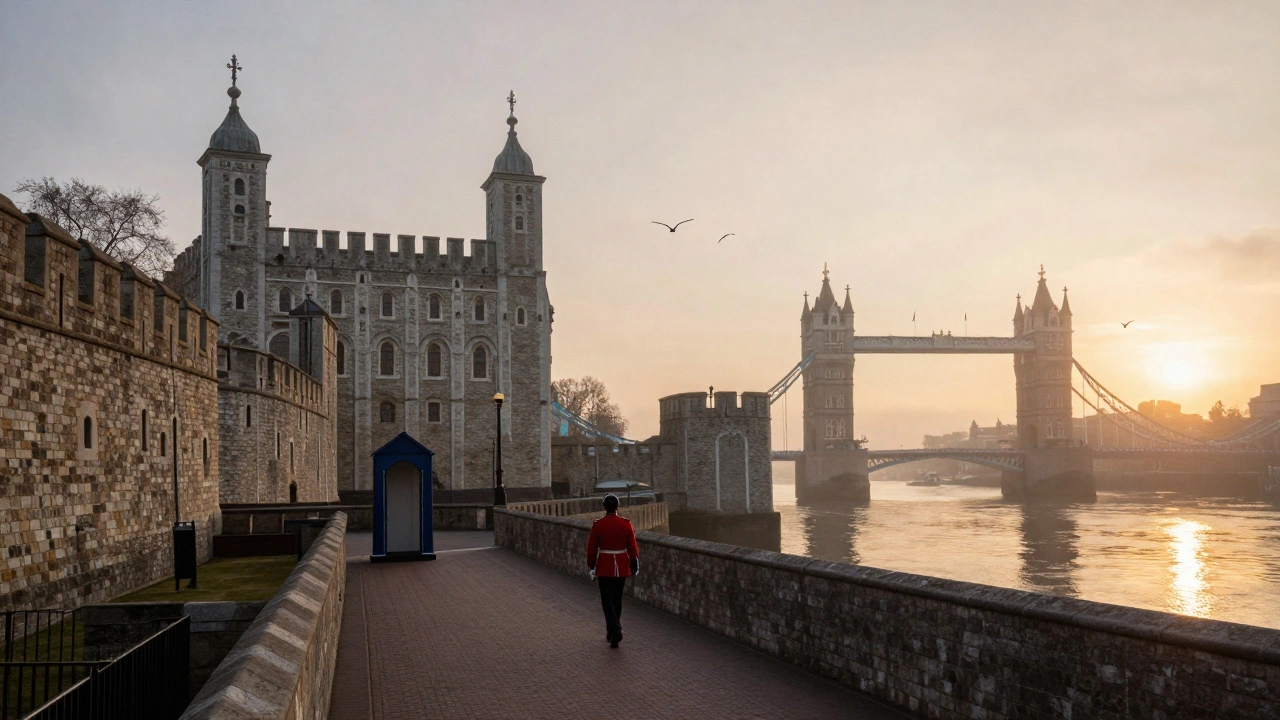The Tower of London: The Many Lives of a Timeless Fortress

The Tower of London isn't just any old fortress nestled in the middle of London; it's literally a living piece of history. Built by William the Conqueror back in 1066, it started as a way to stomp out his rule and make sure everyone knew who was in charge. Over the centuries, this isn't merely some stone relic. It’s been a royal residence, a minting place, even a zoo at one point! Yes, folks, a zoo. Crazy, right?
If you’re planning to visit, there’s a lot more to discover than its majestic white walls. You can wander through the White Tower, be amazed by the Crown Jewels or feel a shiver walking through places that held prisoners, including queens like Anne Boleyn. Make sure to check out the Yeoman Warder tours. Those guys know more about the place than you could squeeze out of any history book.
- From Fortress to Royal Residence
- The Tower's Dark Side
- A Storied Past of Protection
- Unlocking the Visitor Experience
From Fortress to Royal Residence
The transformation of the Tower of London from just a fortress to a royal residence is one ride through history you don't want to miss. Originally, it was all about defense. William the Conqueror knew that holding onto power wasn’t as easy as it seemed, so he erected the Tower to keep a watchful eye over the city and potential invaders.
Then came the fancy stuff. By the 13th century, the Tower started to show signs of becoming a royal crib. Henry III and Edward I, both keen on sprucing up the place, added accommodations fit for a king. We're talking about luxury halls and chic private chambers. This wasn’t just about comfort, it was about making a statement: 'Hey, power lives here.'
The Tower didn’t stop there. During the reign of Richard the Lionheart, the fortress was expanded, fitting for a dude who spent much of his time in battles far from home. Not long after, Edward IV made some tweaks, enhancing the residence with gardens and other niceties.
From hosting praiseworthy banquets to serving as a cozy safe house during turbulent times, the Tower held its ground as a royal hub until the Tudors decided to mix things up. Want to give props to an era that seamlessly blended brutality with opulence? It’s this spot.
By the Tudor period, the Tower’s role as a residence started to diminish. It might not have been the go-to royal address anymore, but its essence as a mighty symbol of authority remained untouched. You can still get a sense of its grandeur when you stroll through the royal quarters and imagine life as it was back then.
The Tower's Dark Side
Sure, the Tower of London is all glitz and glam now, but it wasn’t always this way. It has quite the sinister past, and it's not one for the faint-hearted. The Tower’s notoriety as a prison began in the 1100s. Over time, it became the go-to spot for locking up everyone from highborn traitors to common scoundrels. Yeah, it was like the Alcatraz of its day.
Some of the most famous prisoners were kept within its walls. Anne Boleyn, the second wife of Henry VIII, met her end here. It’s said she still haunts the place—head tucked under her arm, no less! Later on, in the 16th and 17th centuries, the Tower held political prisoners and those who dared oppose the monarchy, sometimes under the most brutal conditions imaginable.
Yes, there were also beheadings, right there in front of the public. Talk about a community event—yikes! Executions occurred mainly in the inner courtyard or Tower Green, away from the public eye, but there's no sugarcoating it; the Tower played a major role in keeping royals safe by dealing harshly with enemies.
The Princes in the Tower is a mystery that still intrigues many. In 1483, young Edward V and his brother Richard disappeared without a trace. They were last seen in the Tower, and no one knows for sure what happened. Some say they were murdered, but it remains one of history’s great puzzles.
Despite its chilling reputation, many of these grim tales add an undeniable fascination. Visitors today can delve deep into this historical landmark's murky past and uncover stories that really make the hairs on the back of your neck stand up.

A Storied Past of Protection
The Tower of London has been a rock solid symbol of security in London's landscape for nearly a millennium. You can't help but feel its aura of defense when you visit. Originally built to protect against uprisings and invasions, it served as a fortress pretty well. Standing tall with its thick stone walls and strategic position along the River Thames, it was designed to shield London from external threats.
Over the years, the Tower has seen its fair share of action while playing a key role in battles and conflicts. In medieval times, it was the go-to place for storing important documents and treasures, thanks to its unparalleled security. The Tower even stored the royal mint until the late 18th century. Talk about a vault!
Its protective reputation wasn’t just about keeping things safe; it also served as an intimidating backdrop to deter would-be usurpers. Trapped within its walls, infamous figures like Guy Fawkes and Thomas More once faced their fates in the Tower. These tales add a shade of foreboding to the fortress's legacy.
In the 20th century, the Tower's military role continued but shifted a bit. During both World Wars, it acted as a military HQ and even a prison for German prisoners. Today, while the battles might be a thing of the past, the Tower still stands as a guardian of tradition and history, carefully protecting the Crown Jewels within its walls.
| Key Protective Roles | Time Period |
|---|---|
| Fortress for defense | 11th century onwards |
| Royal mint and treasury | 13th to 18th century |
| Military headquarters | 20th century |
These days, the Tower continues its protective nature, but instead of keeping guns and gold, it's safeguarding stories and secrets for curious visitors from all over the world.
Unlocking the Visitor Experience
Visiting the Tower of London is like stepping into a history book - one that's been around for almost a thousand years! It's a spot that attracts millions every year, and for good reason. But before you get lost in this ancient marvel, here are a few tips and facts to make sure you have an unforgettable visit.
First off, plan your visit when the Tower opens or later in the afternoon if you want to dodge the biggest crowds. The busiest times can feel a bit cramped, and let's face it, no one wants to miss a decent view of the Crown Jewels just because you can't squeeze in.
Tickets can be a bit pricey, but if you book online in advance, you can save a bit and skip the queue. If you're curious and love to know the juicy tales, the Yeoman Warder tours, or ‘Beefeater’ tours, are an absolute must. These guys know the Tower’s secrets like the back of their hand, especially those thrilling stories of the Tower as a prison.
Speaking of tales, keep an ear open for mentions of the ravens. Legend says if these birds ever leave, the Tower and the kingdom will fall. So, spot these feathered guardians strutting around and breathe a sigh of relief.
If you’ve got a great camera (or an Instagram account crying for attention), don't miss Tower Bridge in the background. The views around the Tower make for some killer snapshots.
Want to know a neat stat? Here's a small table to keep it handy:
| Fact | Details |
|---|---|
| Built Year | 1066 |
| Annual Visitors | Approx. 3 million |
| Number of Ravens | 7 (including a spare) |
Wrapping up, soak in the vibe, because a trip to the Tower of London isn't just a tour; it's a chance to experience the many lives of one of history’s greatest fortresses right in the heart of London.

